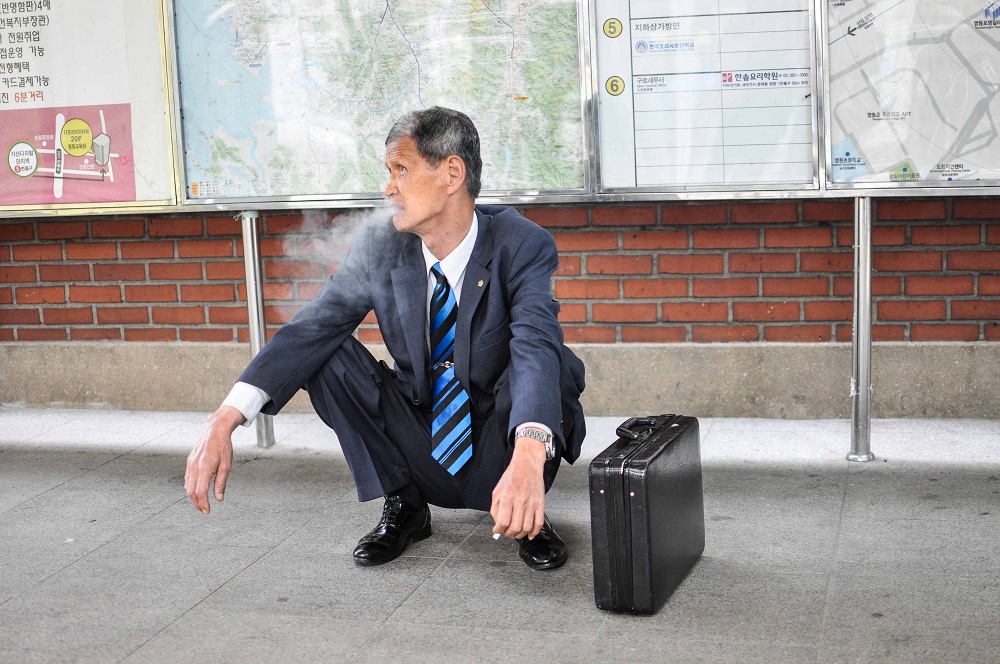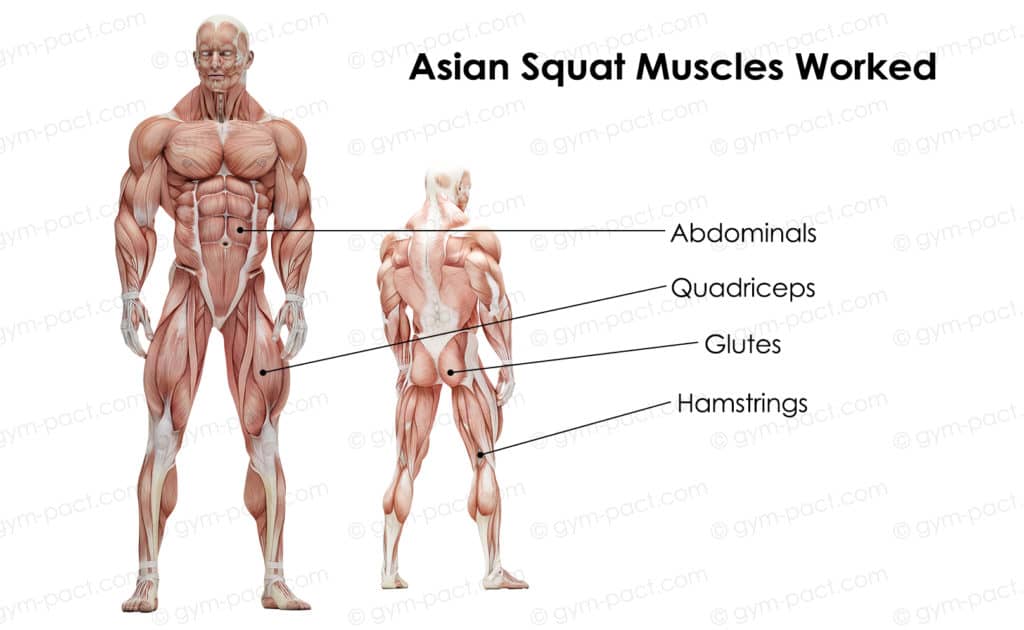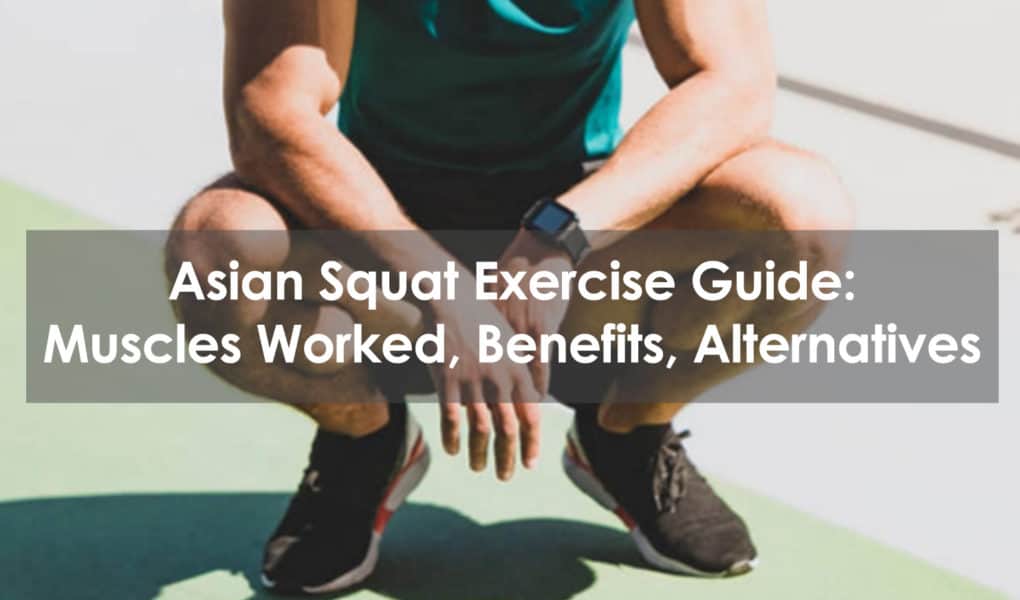Over the past few years, a bizarre phenomenon has spread across the internet; pictures and videos of Asian people, or folks in Asian countries, performing daily tasks while in a deep squat.
This might seem a bit of an odd thing to pay attention to, but many people – particularly those in Western countries – have found what is now called the Asian squat a fascinating feat of body weight control.
Here, we will outline what the Asian squat is, how to perform one and why it’s not possible for everyone to do it.
What is the Asian Squat?
In simple terms, the Asian squat is the process of holding a deep squat position, however, in Asia, it’s not considered a gym exercise to build up body strength. It’s actually the opposite; it’s a common resting position.
Instead of sitting or lying down, it is far more common in many Asian cultures to hold this deep squat when resting or performing daily tasks like reading, eating, or waiting for a bus. It’s a tradition that’s long been passed down through Asian ancestry, with children taught how to perform a deep squat from an early age, and can be used as a makeshift comfortable seat.

One of the key reasons the Asian squat exists is because public toilets in Asia are typically not bowls with seats like conventional toilets in Western countries, but rather squat pans (sometimes referred to as squat toilets). Skin-to-toilet seat contact from different people is considered unsanitary in Asia, so instead they squat over these pans in the floor when using a public restroom.
Deep squatting over a pan is no simple task, which is why it can take several years to master the Asian squat.
Muscles Worked in the Asian Squat
As a deep squat, it should come as no surprise to learn that the Asian squat is excellent for targeting lower body muscles, such as the thigh muscle. However, because of the long range of motion, these squats are also a great way to improve mobility and flexibility.
Deep squatting like this will not only enhance your body awareness but also help limber up your lower body joints. Here are the main muscles worked in the Asian squat:

- Hamstrings
- Glutes
- Quadriceps
- Abdominals
How to Perform an Asian Squat
- In a standing position, have your feet slightly wider than your shoulders and your toes pointing outward slightly.
- Bend at the knees and hinge at your hips, keeping your torso and head upright and straight, to squat down as far as you can, so that your buttocks are not far off of the floor.
- Your feet should be flat on the floor with your weight distributed evenly. Focus on keeping your torso in line with the middle of your feet to minimize any swaying backward or forward.
- Rest your hands on your knees, if you wish, and try to relax into the position, aiming to stay there for an extended period of time.
Why Can’t I Do The Asian Squat?
Not everyone can perform an Asian squat, at least not right away. This usually comes down to ankle flexibility; if you have inflexible ankles, you’re likely to struggle with this position as it heavily relies on these joints in particular.
Further still, your general body mobility has an impact on this range of motion, particularly in your hips. Some of this can be genetic, in that your body is naturally just not as mobile as others, but usually, this can be addressed through training.
Most people don’t work on their body flexibility or mobility each day, as their normal routines don’t require it. So, when they go to perform a movement like this one, it’s a challenge. Likewise, if you’re not used to performing any sort of squat, then the Asian squat will certainly be difficult to pull off.
Benefits of the Asian Squat
Part of the reason this squat variation has become so popular is that it’s proven to have numerous health benefits. As mentioned, it will help strengthen your legs and lower body muscles.
It will also help improve your ankle mobility as well as your overall posture, which can have a significant impact on your daily life.
The squat also helps you become more aware of your body and how it works and moves, plus it can even help with digestion and bowel movements.
Alternatives to the Asian Squat
If you’re trying to build up to the Asian squat, there are a few things you can try. Firstly, you should make sure you’re comfortable performing standard bodyweight squats for reps and in a controlled manner.
Wall sits, where you essentially sit against a wall without a chair, will also help work the muscles and joints that are activated in the Asian squat.
Mobility exercises like hip rotations, downward dog, or foam rolling can also be hugely beneficial when trying to prepare your body for this squat variation. Hindu squats are another alternative to consider.
Conclusion
This move is a difficult one to master for those who aren’t used to it, and it’s different from almost all other squat variations in that it’s predominantly used as a resting pose. That being said, it can have some startling health benefits, so if you’re hoping to take advantage of these then this guide will help.
Frequently Asked Questions
Why do I fall backward when I squat?
The main reason is for this is your weight not being distributed evenly in your feet. Pay attention to where your torso is in relation to your feet and legs and make sure it’s running through that midline. You might also be using too much weight.
Why can’t I squat with my feet flat?
This likely comes down to ankle mobility. If your ankles are inflexible, it’s difficult to keep your feet flat while performing a squat. To fix this, add some ankle mobility exercises into your workout regime using just your body weight or resistance bands.
Are deep squats bad for your back?
When performed correctly and safely, no they are not. In fact, deep squats like the Asian one are beneficial to areas of your lower back as they are taking pressure off of your erector spinae.







